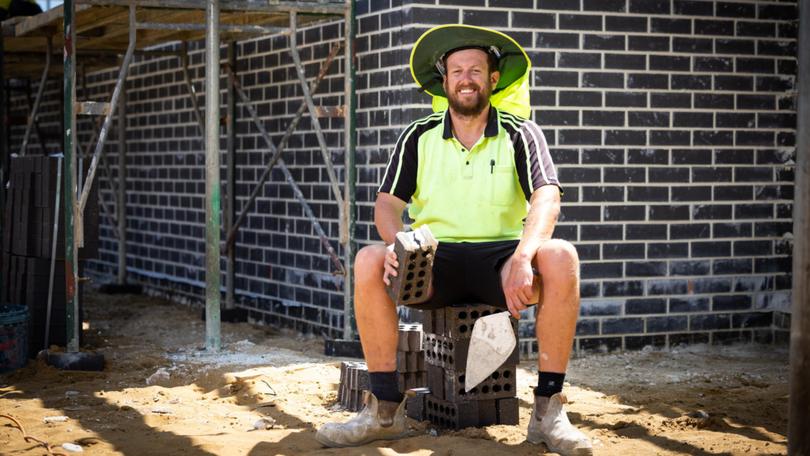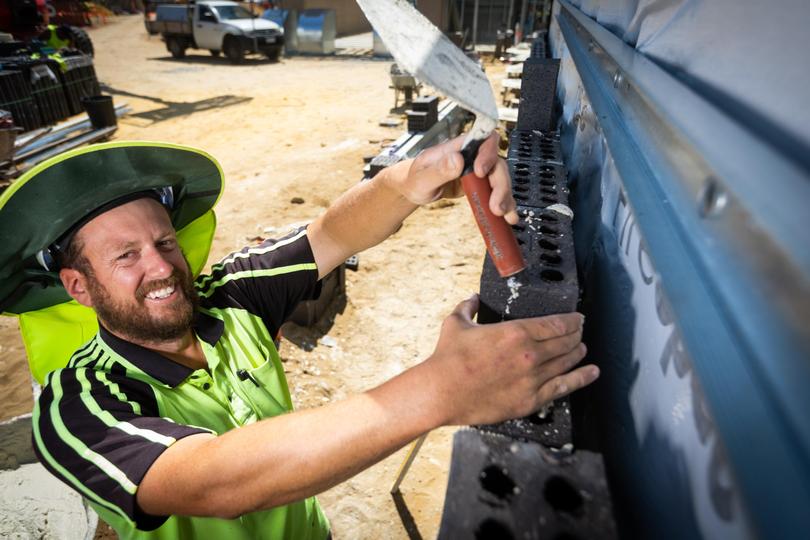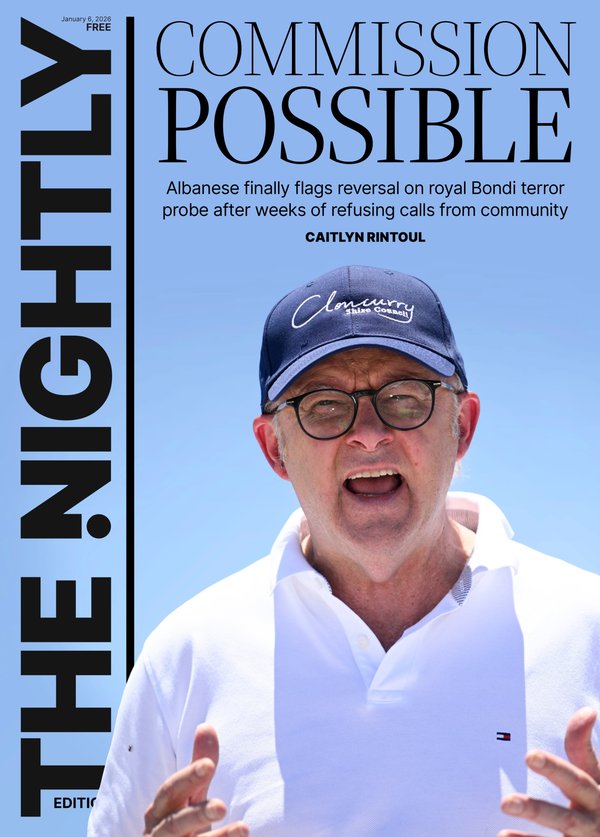WA bricklayers back charging $3 a brick, emerges as key driver in Australia’s inflation problem

WA bricklayers are back charging $3 a brick as the State’s runaway building industry defies 13 interest rate rises and emerges as a key driver of the nation’s inflation problem.
Brickies made headlines during the COVID building boom when they demanded at least $3 a brick but the heat came out of the market in January this year, with rates falling to between $1.80 and $2.
A surge in building approvals has seen rates spike to between $2.70 and $3 for face bricks laid in Perth, with country builders paying far more than that.
Sign up to The Nightly's newsletters.
Get the first look at the digital newspaper, curated daily stories and breaking headlines delivered to your inbox.
By continuing you agree to our Terms and Privacy Policy.Brickies on the west coast are significantly out-earning those on the east coast.
Perth tradies on older contracts are making $2.20 a brick, compared with $1.40 in Melbourne. To make $1000 a brickie in Toorak needs to lay 260 more bricks than a tradie working in Tuart Hill.
“Prices started moving again mid-year,” Master Builders Association chief executive Matthew Pollock said.
“It seems that prices of certain trades, particularly of brickies, are very sensitive to demand.
“It doesn’t require much additional demand to cause a price increase.”
Mr Pollock said lending data and build approvals released in the past few months pointed to a surge in prices.
He predicted that rates would stay high.

“The expectation moving forward is we need to build more homes,” he said.
“If you look at the breakdown of what the Federal Government is targeting, you’re talking a substantial increase in what we are building now.
“The only solution is bringing on more tradespeople and we are just not doing that.”
The Housing Industry Association warned last month that the State could need 120,000 tradies over the next decade to fill demands in resources, energy, infrastructure and to build new houses.
The MBA’s own modelling shows 40,000 of them will be needed by the end of 2026 to ensure people have a roof over their heads.
“That figure takes into consideration demand from residential, which is being driven by high migration rates, plus government projects,” Mr Pollock said.
The market will be supercharged when approvals under the $10 billion Housing Australian Future Fund are announced in the coming weeks.
That Federal fund seeks to build 30,000 affordable homes in Australia in the next five years, providing ongoing solid work for bricklayers such as Michael Chapman (picture below).
“There is also a very strong pipeline of commercial work and engineering work,” Mr Pollock said.
“That’s as strong as it’s ever been. Every sector is competing for resources and labour.”
Builders are bracing for a margin-busting return to the frenetic days of COVID stimulus payments when buyers rushed to sign contracts to clinch State and Federal subsidies worth a total of $45,000.

As builders outbid each other to secure tradies, local giant BGC went to the extent of poaching brickies from the Eastern States.
The company was offering a $108,000 annual salary, plus superannuation and annual leave, as well as a $2500 relocation fee.
In 2021, the competition watchdog investigated WA brickies over a suspected price-fixing operation designed to cash in on surging demand.
The cartel was orchestrated through a private Facebook page and had the goal of setting prices at $3 a brick — three times the going rate 18 months prior.
Reserve Bank governor Michelle Bullock has consistently singled out construction costs as a driver of inflation and a reason official interest rates would not be cut in the near term.
There was relief in sight a few months ago when price tracker CoreLogic reported that labour, materials and other construction costs fell during the June quarter.
Costs had lifted at their slowest pace annually in 22 years on the back of falling timber and metal product prices — but the price of labour remained elevated.
The recent uptick in brickies rates suggests the subdued 0.5 per cent lift in construction costs could have been short-lived.
Originally published as WA bricklayers back charging $3 a brick, emerges as key driver in Australia’s inflation problem

